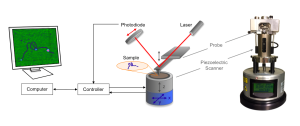Biophysics is a fascinating field that combines principles from physics and biology to understand the complex processes that occur within living organisms. It delves into the intricate interactions between molecules and cells, shedding light on the fundamental mechanisms of life. Cell Structure and Function Cells are the building blocks of life, each with its own
Biophysics is a fascinating field that combines principles from physics and biology to understand the complex processes that occur within living organisms. It delves into the intricate interactions between molecules and cells, shedding light on the fundamental mechanisms of life.
Cell Structure and Function
Cells are the building blocks of life, each with its own unique structure and function. From the nucleus that houses the genetic material to the plasma membrane that regulates what enters and exits the cell, understanding cellular structure is crucial in deciphering cellular dynamics.
Importance of Molecular Interactions
At the heart of cellular dynamics lie molecular interactions. Proteins, nucleic acids, lipids, and small molecules constantly interact with each other, orchestrating various cellular processes such as signaling, metabolism, and replication.
The Dance of Molecules
Brownian Motion and Molecular Diffusion
One of the fundamental principles governing the movement of molecules within cells is Brownian motion. This random movement, driven by thermal energy, causes molecules to diffuse throughout the cellular environment, facilitating vital processes like nutrient uptake and waste removal.
Protein Folding and Unfolding
Proteins are the workhorses of the cell, performing a myriad of functions ranging from catalyzing chemical reactions to providing structural support. The process of protein folding, where a linear chain of amino acids adopts a specific three-dimensional structure, is essential for proper protein function. Conversely, misfolding can lead to protein aggregation and diseases like Alzheimer’s and Parkinson’s.
Enzymatic Reactions
Enzymes play a crucial role in catalyzing biochemical reactions within cells. By lowering the activation energy required for a reaction to occur, enzymes accelerate cellular processes, ensuring timely responses to environmental cues and metabolic demands.
Biophysical Techniques
Fluorescence Microscopy
Fluorescence microscopy allows researchers to visualize cellular structures and processes with high spatial and temporal resolution. By tagging molecules of interest with fluorescent probes, scientists can track their movements and interactions in real-time, providing valuable insights into cellular dynamics.
Atomic Force Microscopy

Image by : Yandex
Atomic force microscopy offers a unique way to study the topography and mechanical properties of biological samples at the nanoscale. By scanning a sharp probe across the surface of a specimen, researchers can generate high-resolution images and measure forces between molecules with remarkable precision.
X-ray Crystallography
X-ray crystallography remains a powerful tool for determining the three-dimensional structures of biological macromolecules. By analyzing the diffraction patterns produced when X-rays interact with crystallized samples, scientists can decipher the precise arrangement of atoms within proteins, nucleic acids, and other cellular components.
Drug Design and Development
Biophysics plays a pivotal role in drug discovery, providing insights into the molecular mechanisms of diseases and potential targets for therapeutic intervention. By understanding how drugs interact with their biological targets, researchers can design more effective and selective treatments with fewer side effects.
Understanding Disease Mechanisms
Biophysical techniques have revolutionized our understanding of disease mechanisms, from cancer to neurodegenerative disorders. By elucidating the molecular basis of disease, scientists can develop novel diagnostic tools and targeted therapies tailored to individual patients, ushering in a new era of precision medicine.
Conclusion
The dance of molecules within cells is a mesmerizing spectacle that underlies all aspects of life. Through the lens of biophysics, we gain a deeper appreciation for the intricacies of cellular dynamics and the remarkable feats accomplished by living organisms. By harnessing the power of biophysical techniques, we continue to unravel the mysteries of life and pave the way for new breakthroughs in medicine and beyond.
FAQs
What is biophysics?
Biophysics is the interdisciplinary study of biological phenomena using the principles and methods of physics.
How do biophysical techniques contribute to medicine?
Biophysical techniques provide valuable insights into the molecular mechanisms of diseases and aid in the development of new diagnostic tools and therapies.
What is Brownian motion?
Brownian motion is the random movement of particles suspended in a fluid, resulting from their collisions with molecules of the surrounding medium.
Why is protein folding important?
Protein folding is essential for proper protein function, as it determines their structure and, consequently, their biological activity.
How do enzymes accelerate chemical reactions?
Enzymes lower the activation energy required for a reaction to occur, making it easier for substrates to undergo the transition state and form products.
















